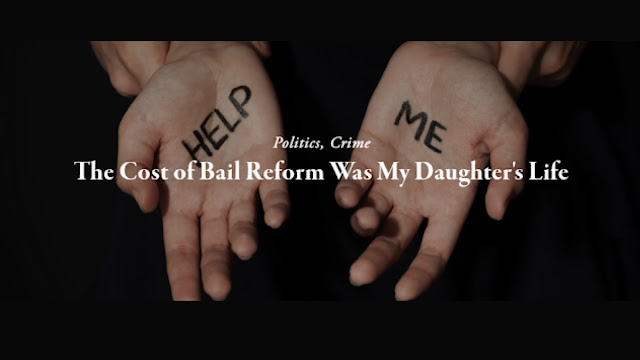Why Not a Presumption of Release? New York Tried it With Devastating Results
Why Not Just Release Certain Defendants Accused of Low Level Crimes?
For the last few years, Texas Judges have been under attack from all sides. Even OCA seems to have crossed the line of an agency compiling information for the Texas Legislature and is attempting to become a co-executive in setting policy.
Four years ago judges were told that the private surety bail system was going to be declared unconstitutional. Therefore, counties were told by consultants that they should adopt risk assessments and that would ensure that they were not sued by activist groups over their bail practices. Dallas County spent millions doing just that to then be sued anyway. Next, the 5th Circuit handed down opinons in O'donnel I and O'donnel 2 holding that if a county used a bail schedule, it had to have procedural protections for the poor so that they would have an opportunity to ask for a deviation from the scheduled amount. Also, the 11th Court of Appeals and the 5th Court of Appeals held that private surety bail was constitutional.
So next we have heard that bail is just "unfair."
For the last two years, we have been told that the O'donnel opinions did not mean what they said. Then the 5th Circuit issued a new opinion on December 28, 2020 confirming both opinions in O'donnel.
We seem to be living in a time where we cannot agree about what an opinion from the 5th Cricuit says.
This noise has brought about much confusion. This raises the newest argument from advocates, "Why not start with a presumption of release?"
Whether advocates are taking about releasing certain defendants on low PR bonds or whether they are arguing for release without bond, these are both example of "simple release."
This type of release was tried with much fanfare in New York at the start of 2020 with devastating results. New York immediately saw a sharp uptick in crime attributed to its recently enacted bail reform. After four months and during the middle of a world wide pandemic, many of the reforms were rolled back by the New York legislature.
Officers were complaining that they were arresting the same people everyday only to have them released even before the paperwork was completed.
The creation of a presumption of release is in fact a step backwards in finding ways to cost effectively and efficiently process large numbers of people through the jail. Here are just a few of the reasons: (1) it creates a requirement that every misdemeanor defendant be magistrated to review the issue of the presumption; (2) the largest counties need to find ways to direct people away from bail magistration so that the judges may use their limited time on the remaining cases; (3) this presumption creates a system whereby the magistrate does not have time to exercise the court's discretion and through the chaos is forced to release most if not all people accused of certain crimes; and (4) the people who lose in this situation are the victims.
Advocates for change have been advocating for new ways of release that does not involve the private surety bail system. Therefore, courts have tried risk assessments and simple release using low PR bonds. Neither of these have been successful alternatives to the private surety bail system. According to the largest digital companies in the world risk assessments were rushe to use without successful study. In the years since, studies have caught up with these tools and they have consistently concluded that risk assessments should not be used as a part of criminal justice reform. Simple release was a disaster in New York and it will be anywhere else it is tried. Simple release sends a message to criminals that they have a green light to commit more crime and they will do just that as they did in New York. Also, the use of a presumption of release will set up a system that will buckle under its own weight because of a lack of resources to comply.
So what is the solution? Small counties that already use only individual magistration are in compliance with the federal court rules and do not need to take any further action.
Larger counties that are looking for additional tools to effectively and efficiently process large numbers through the jail should reject the use risk assessments or simple release. Instead, the counties should look the federal decisions for guidance. These cases say that the courts may use a reasonable bail schedule coupled with procedural protections for the poor. This will allow large numbers of people who can satified the scheduled amount to avoid magistration for bail and the magistrate will have the time to focus on the individuals left to exercise the court's discretion in a manner that is more likely to protect victims and public safety.







Comments
Post a Comment